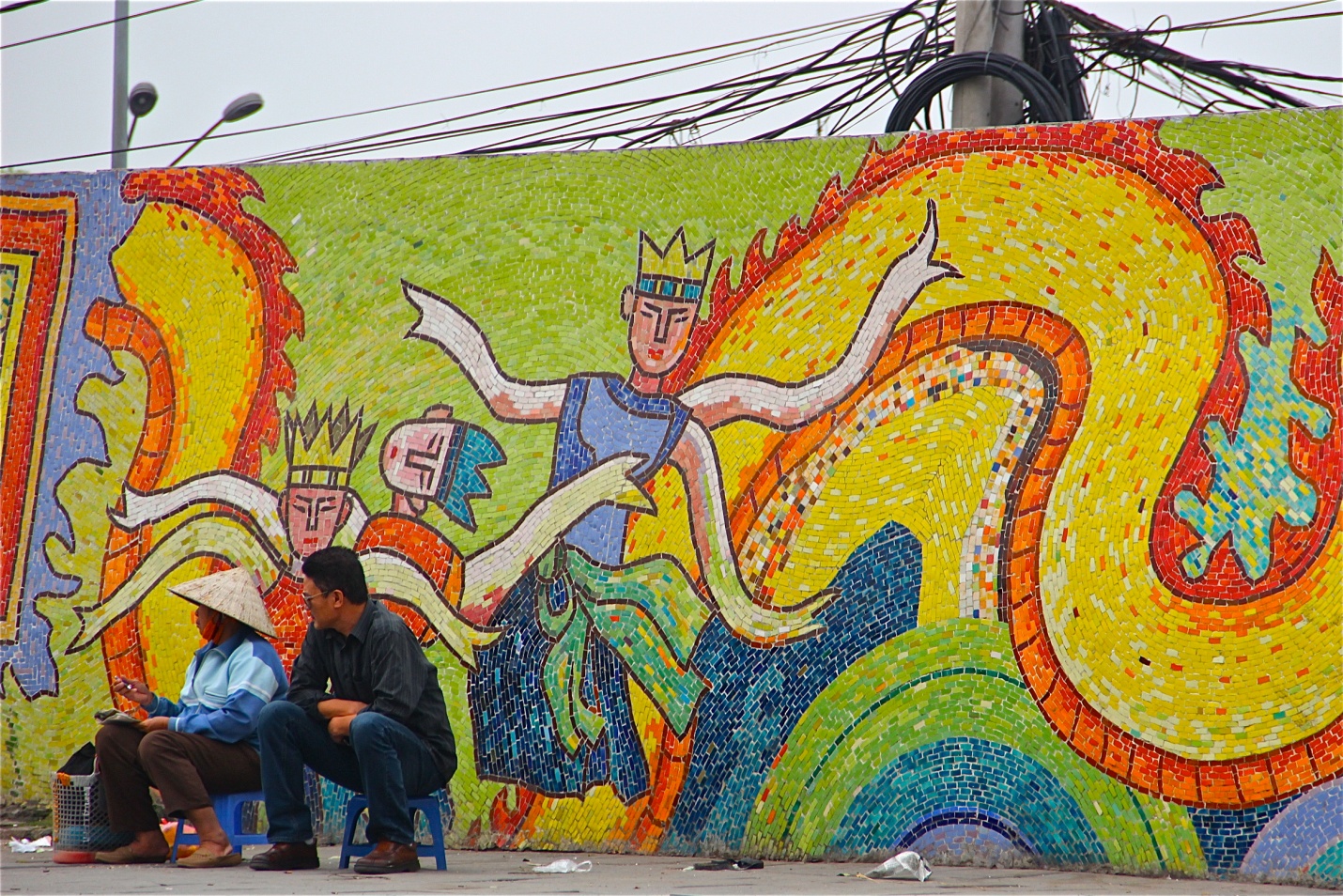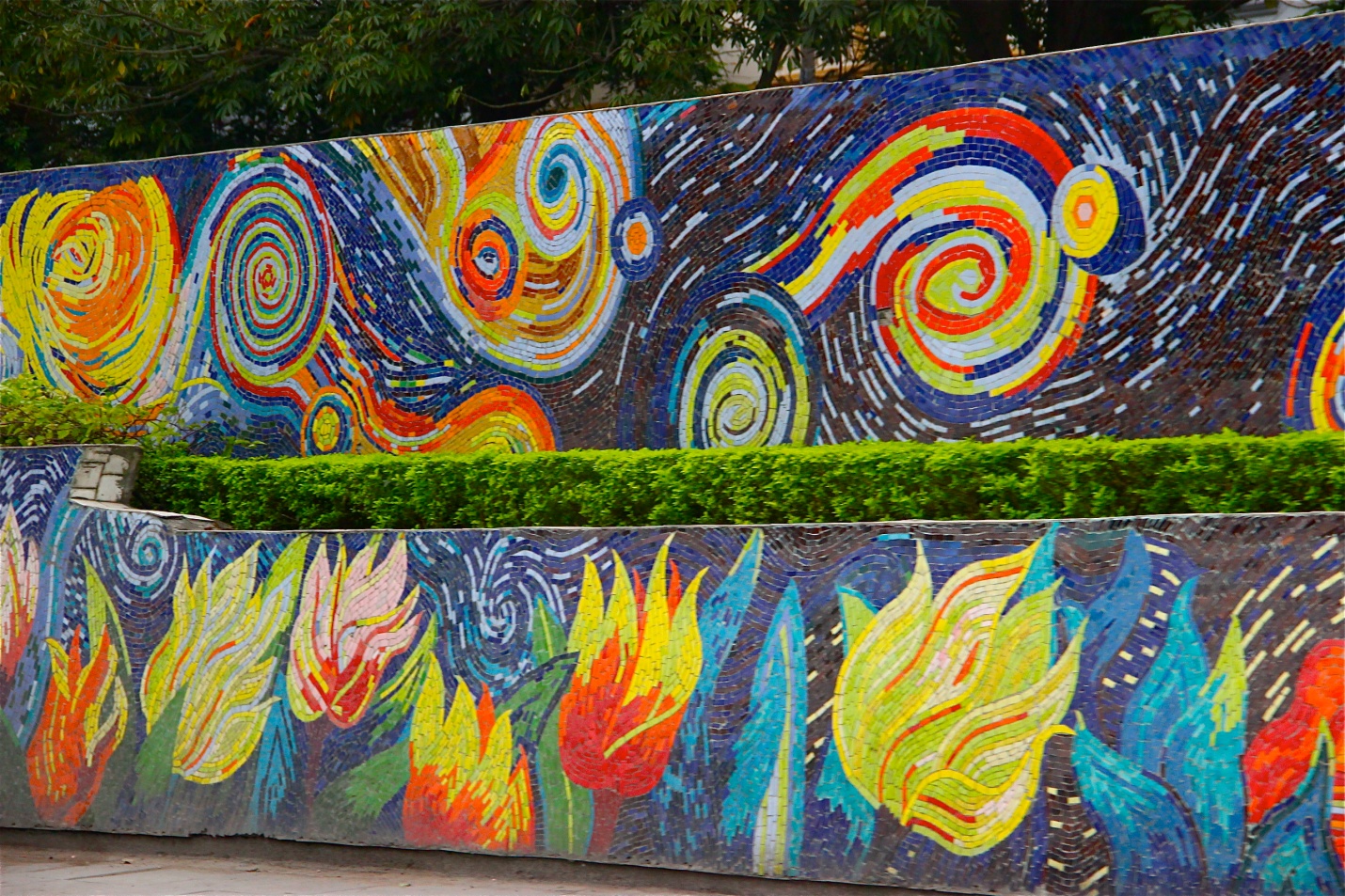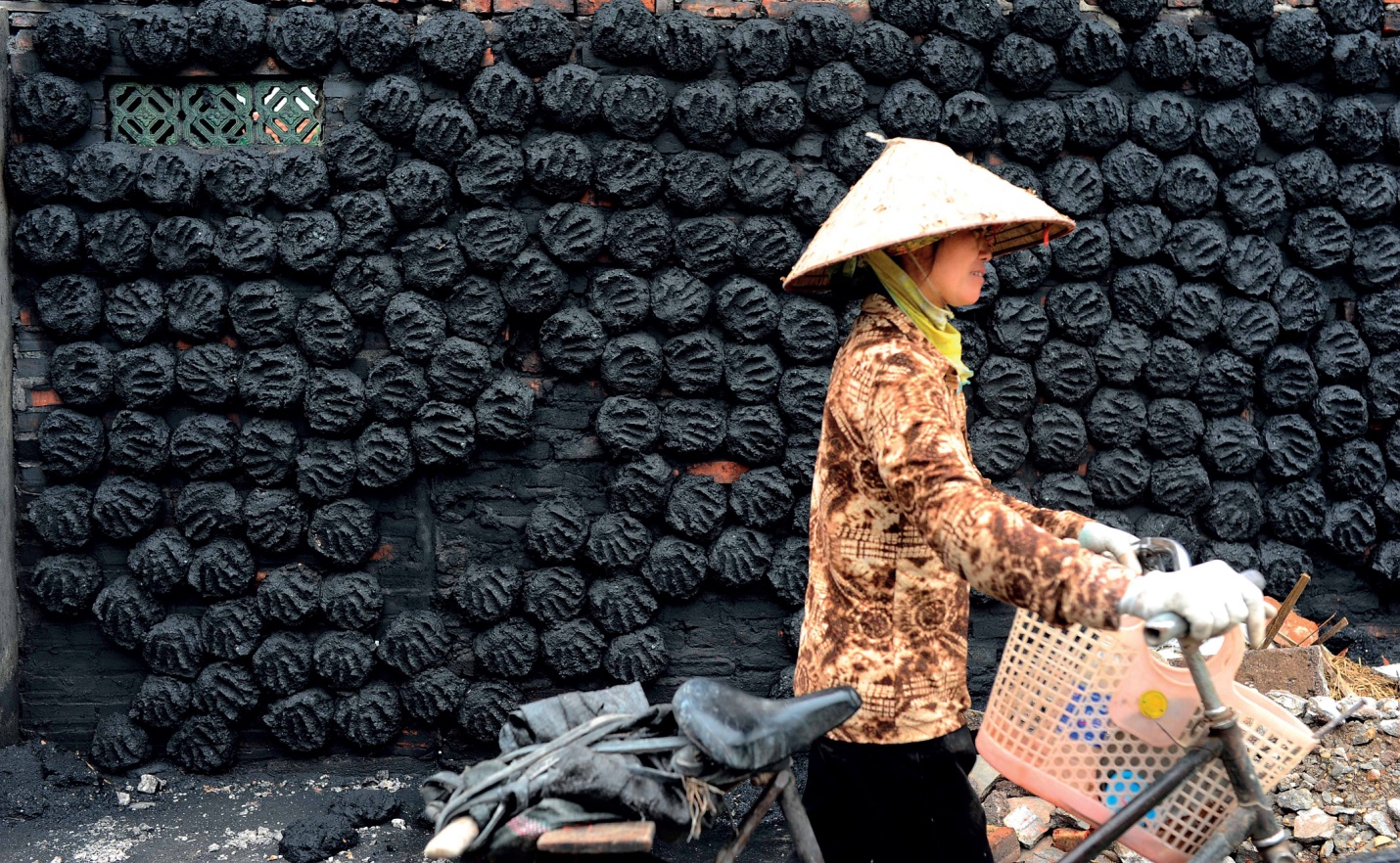The Mosaic Wall spans 4 kilometers along the Hong River Dyke. Its mother is Thuy, a journalist and artist. The first idea sparked when she saw an ancient ceramics and bricks; and she thought: “Why not create a new one?” Out of love and passion for Hanoi, she asked her friends; and the idea went viral. It was commenced in 2007 and contributed by mosaic artists all over the world. The major public art was finished in 2010, just in time to celebrate Hanoi’s 1000 birthday. Currently, it still holds the title of the longest mosaic road in the world. You can read more: tours Indochina

However, to me, Hanoi Ceramic Road is not just the largest ceramic mosaic, officially recognized by the Guinness Book of Records. It is the road representing the love and cooperation between people, both nationally and internationally. It shows me that when you have a wonderful idea, you just need to tell others. People will help you to make your dream come true. Many artists from over the world had come to Hanoi. Many Vietnamese, especially Hanoian had supported the project financially and emotionally until it was completed.
To me, it is also my country’s history and future, written colorfully and brightly by many art lovers. It tells us the story of Hung King since the day Vietnam was born. It also depicts how beautiful many famous scenes in many provinces in Vietnam are. It presents the dream of many children, as their pictures are recreated in form of ceramics again on the wall. Many artists also got the muse for their art works from well known artists. I can see some famous patterns in Van Gogh Moonlight Masterpiece. From my point of view, it means that we can learn from fellow international friends and appreciate their works.

To me, the ceramic road is also the public art which promotes and introduces how wonderful our traditional products are. Do you know that every piece of mosaic was made in nearby traditional ceramic village, Bat Trang? The pieces were made of Hong River clay, by Hanoian pot makers. How fantastic it is! Many people think that local products are not as good as imported one. Now, when they see a beautiful and meaningful wall there, I bet they may change their mind, at least about the quality of Bat Trang ceramics.

In addition, the road has also made the different impression on Vietnamese in terms of work art. Currently, public money has not been invested sufficiently in art in public space. Some people think that it is not important and the money should be spent on other meaningful projects such as building more schools or hospitals. Now, when the ceramic road appears and makes the city more beautiful, make Hanoi’s citizens like me feel happier; maybe some of them have had second thought on art and its wonderful influence on life.
If you intend to go to Vietnam, specifically Hanoi, visiting this colorful mosaic road will be worth of your time. If you need someone who knows well about the road, the traditional ceramic village or Vietnamese history, you might contact my friends in Indochina tours Vietnam They are friendly and, like me, they love Hanoi. I bet having them as a tour guide will add more taste in your trips.
I hope that you will have wonderful time in Hanoi.
Indochina Voyages Blogger
See more:








